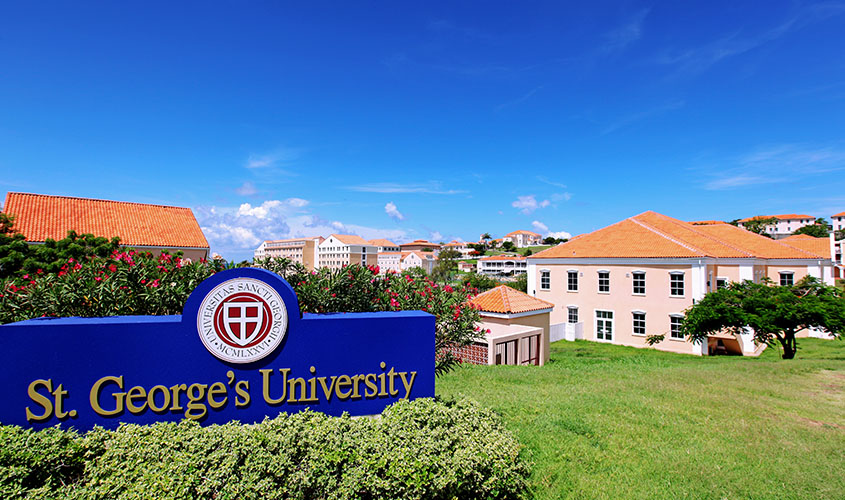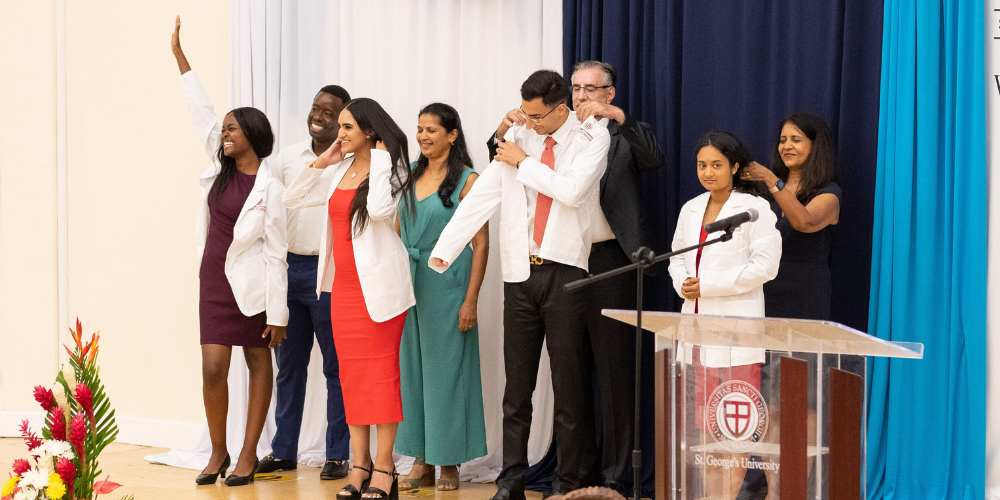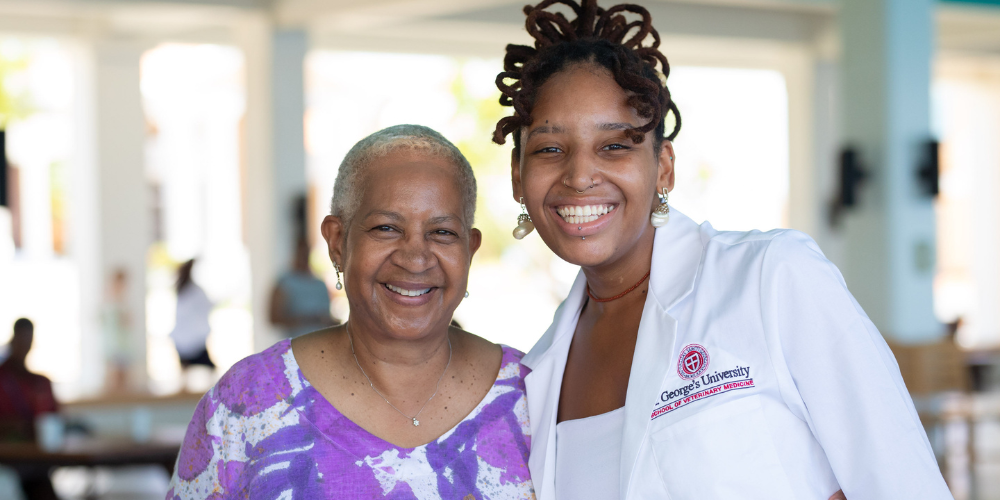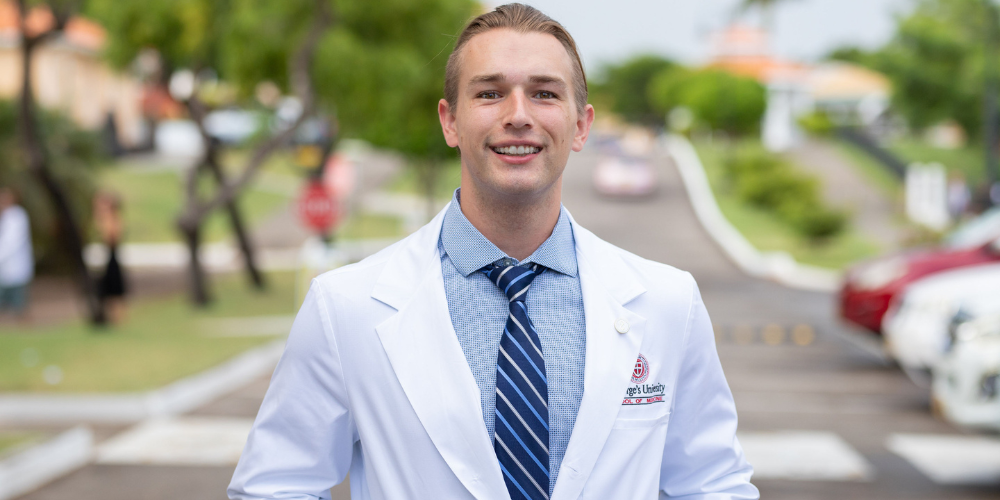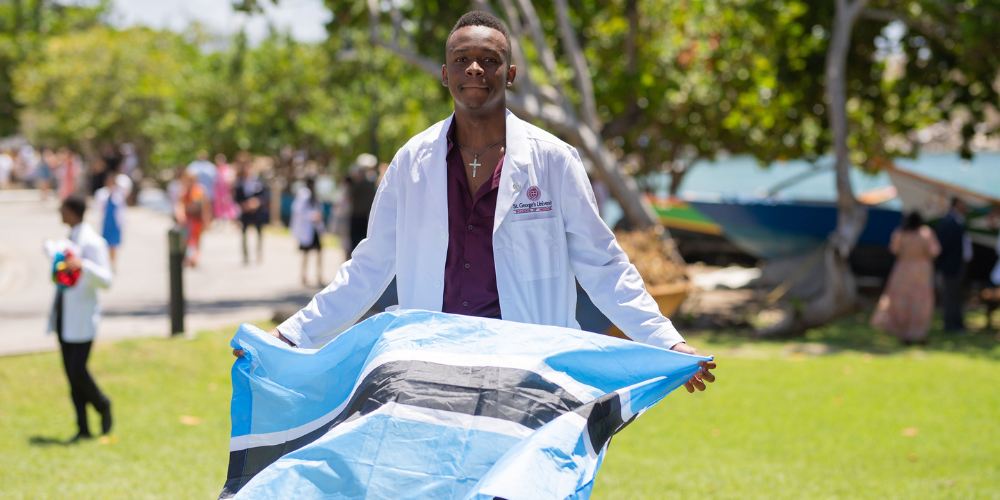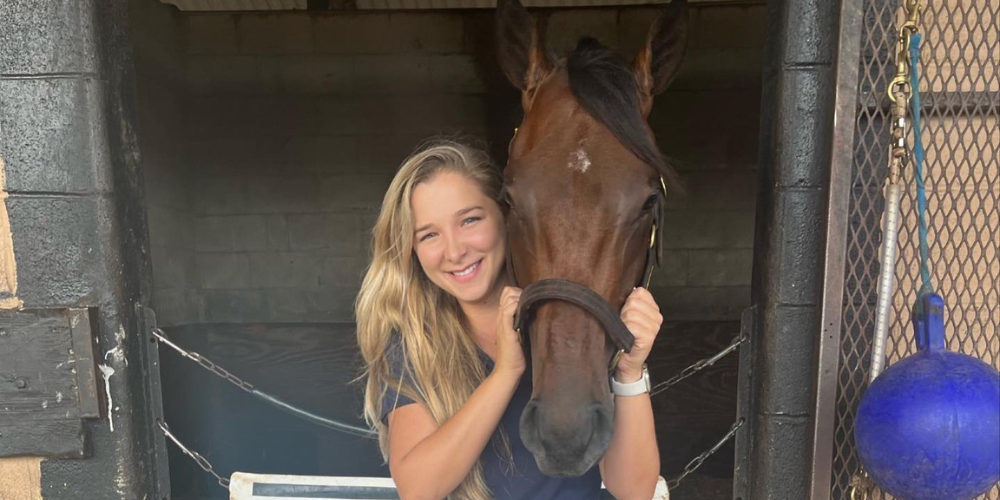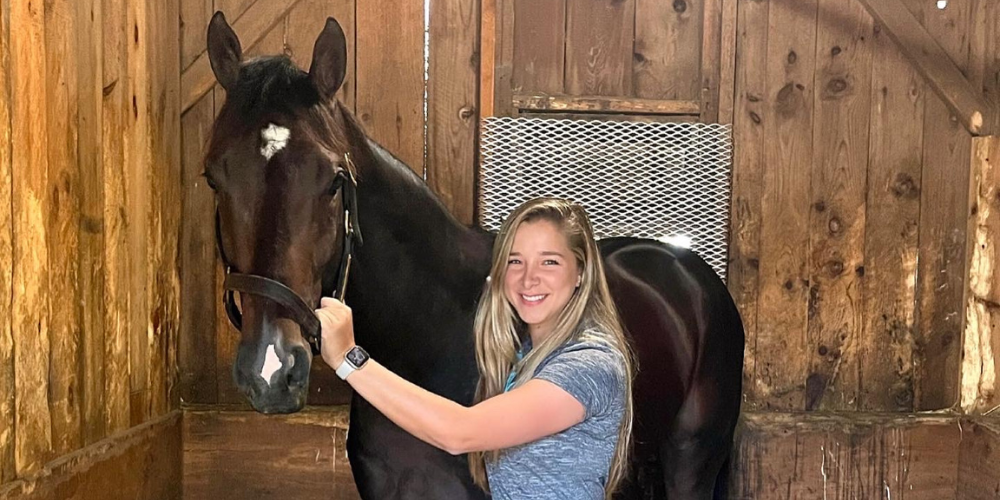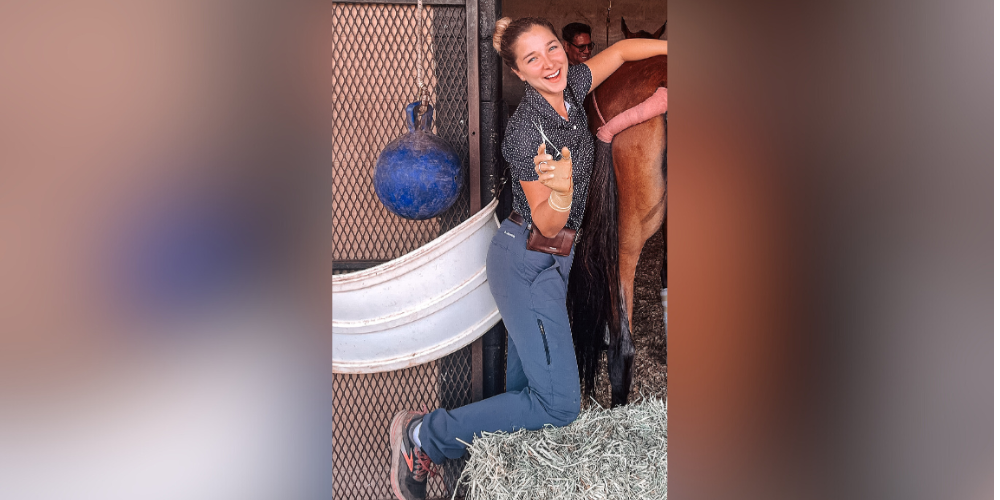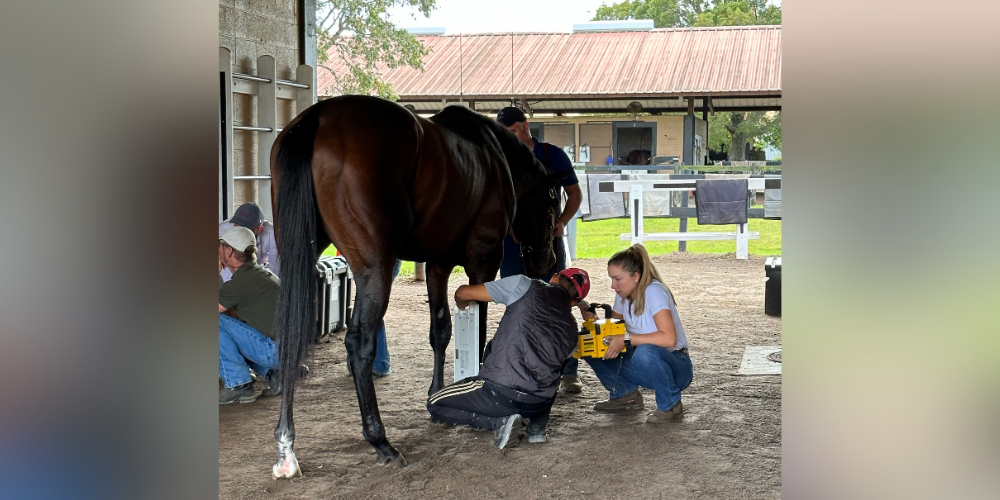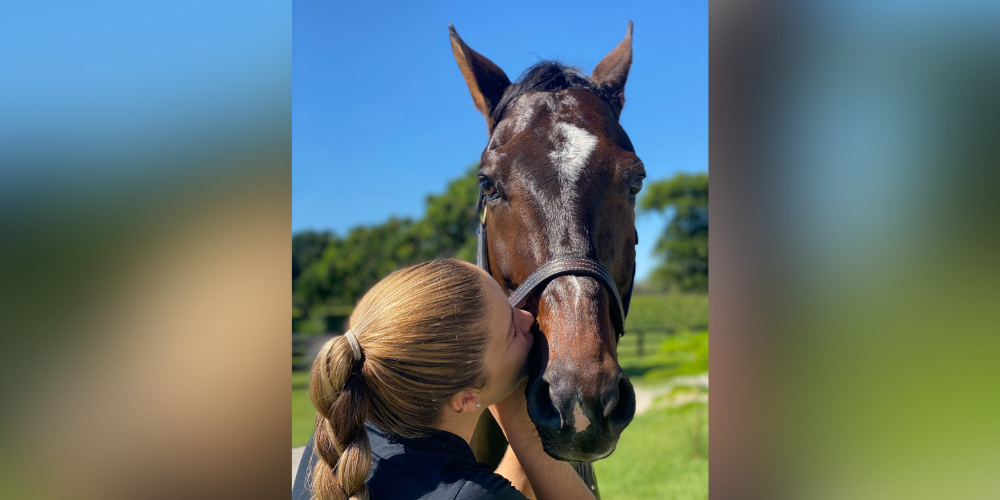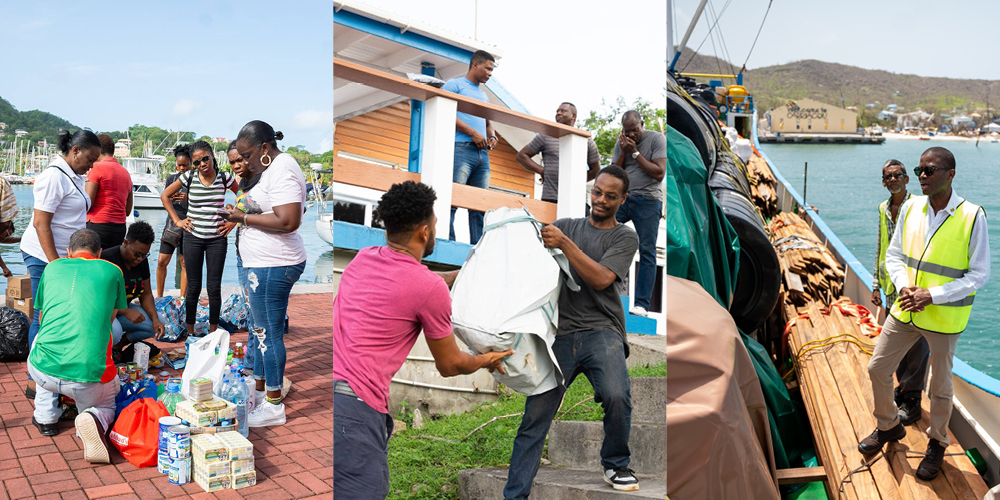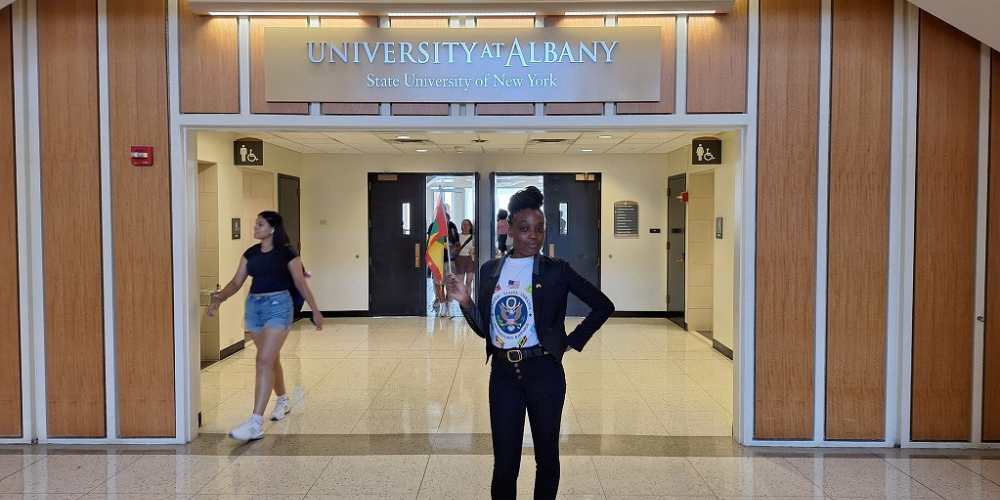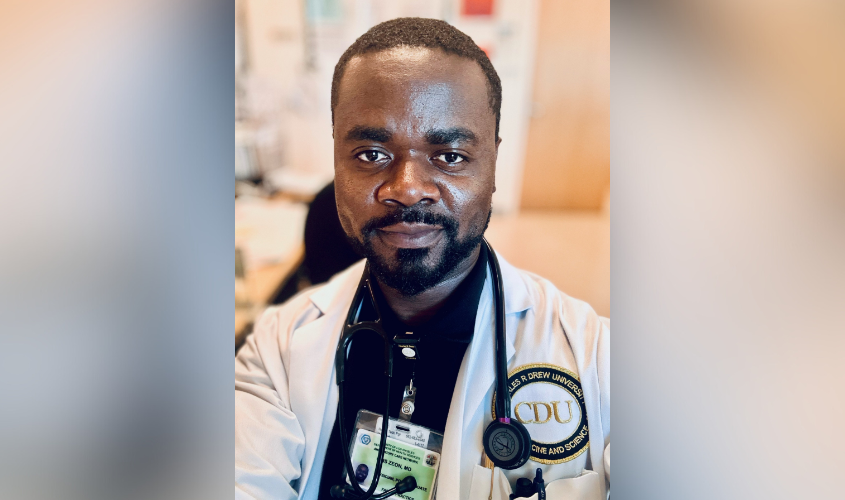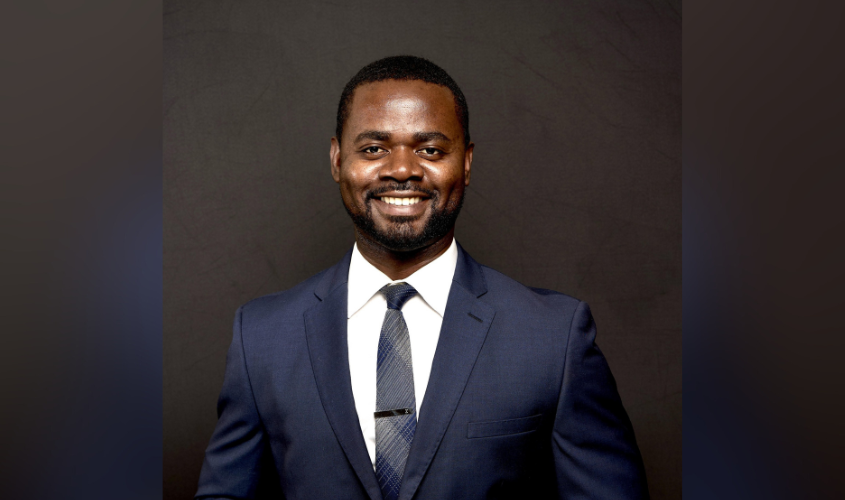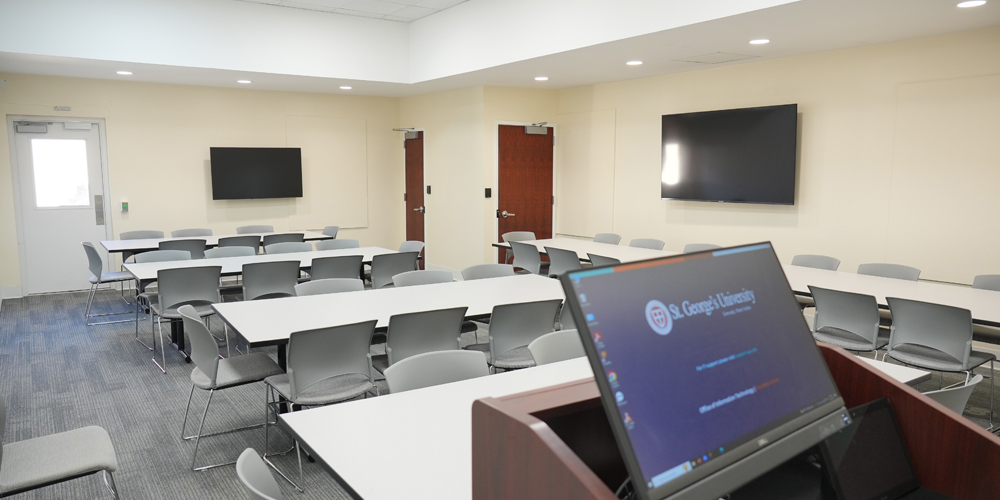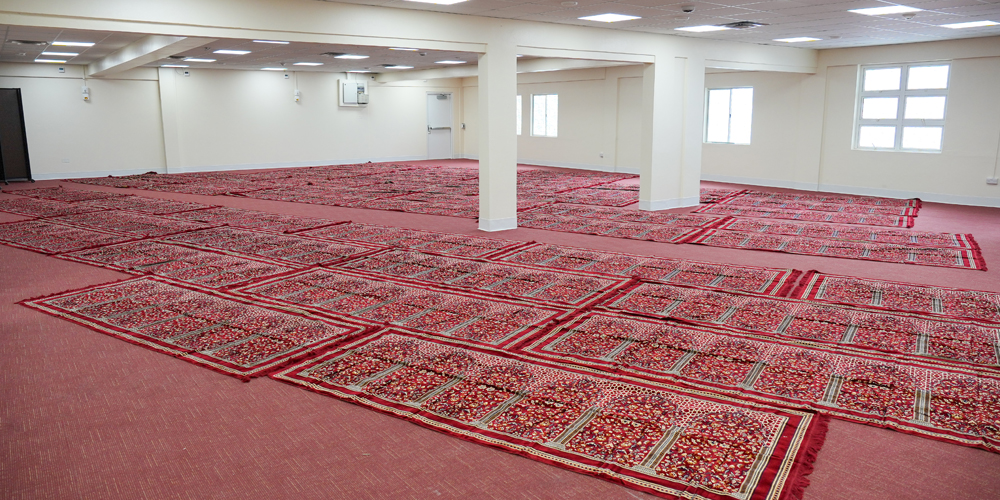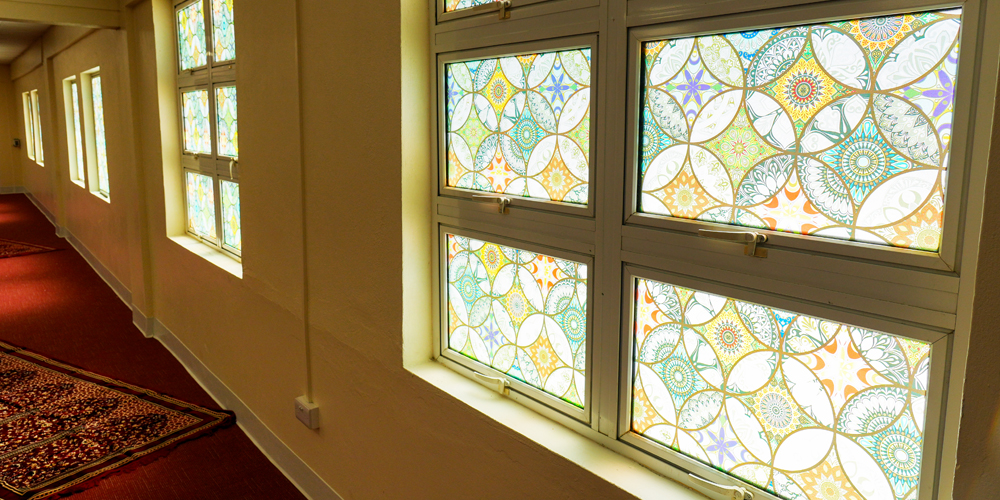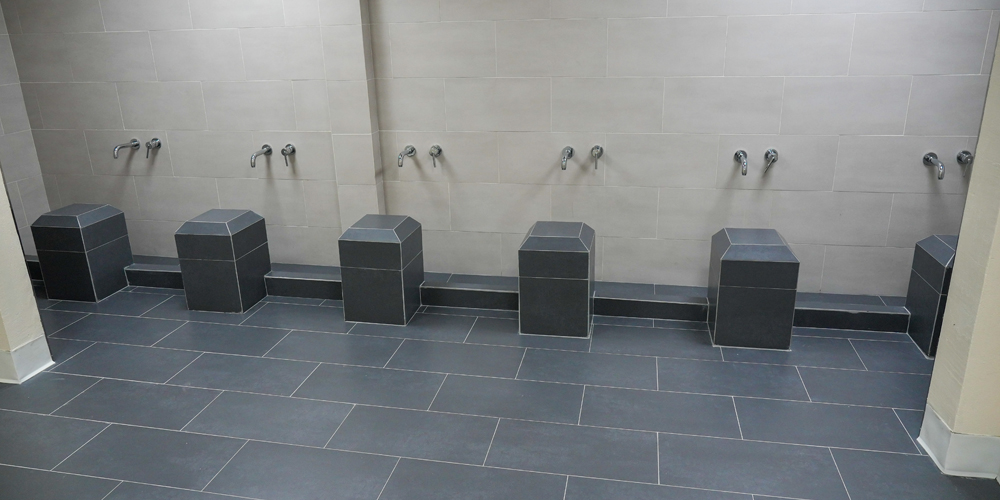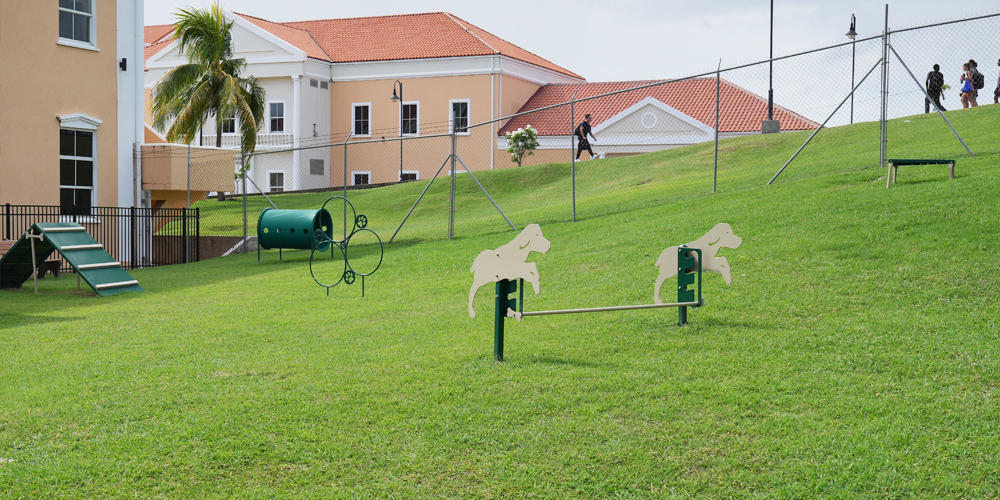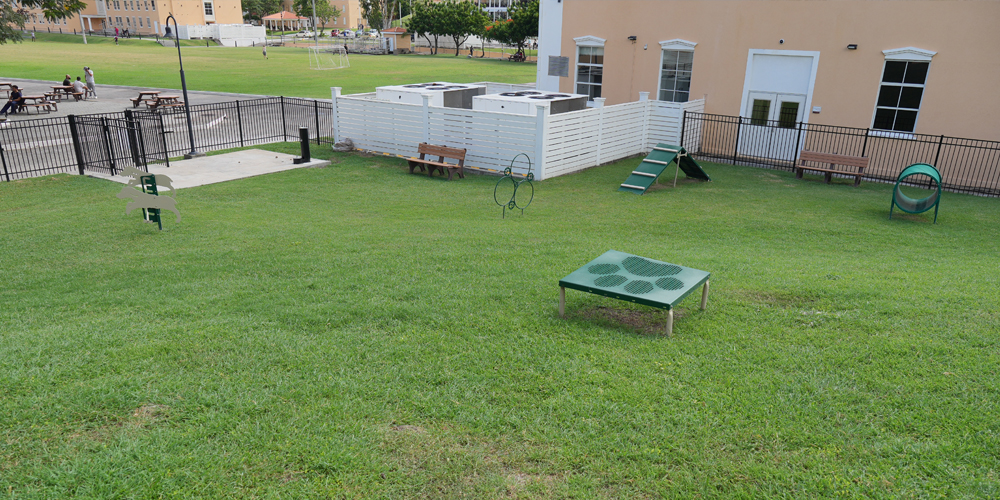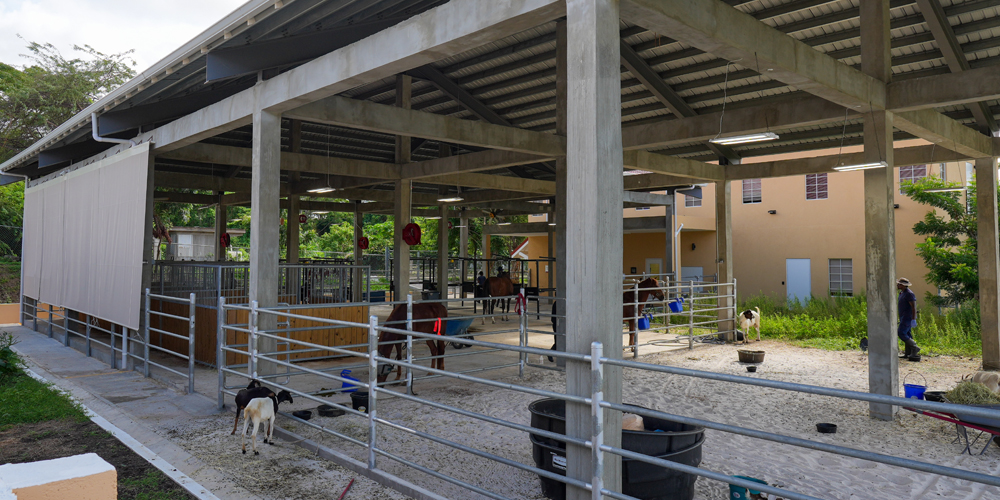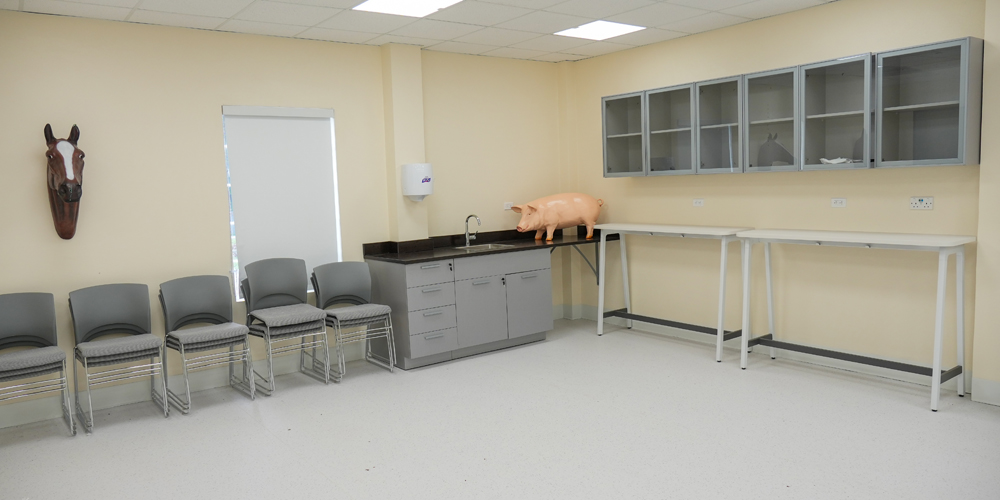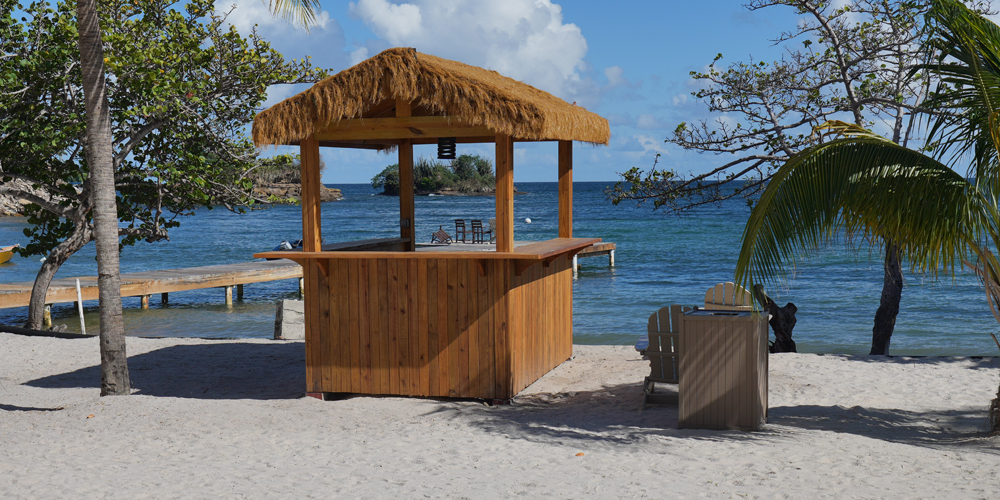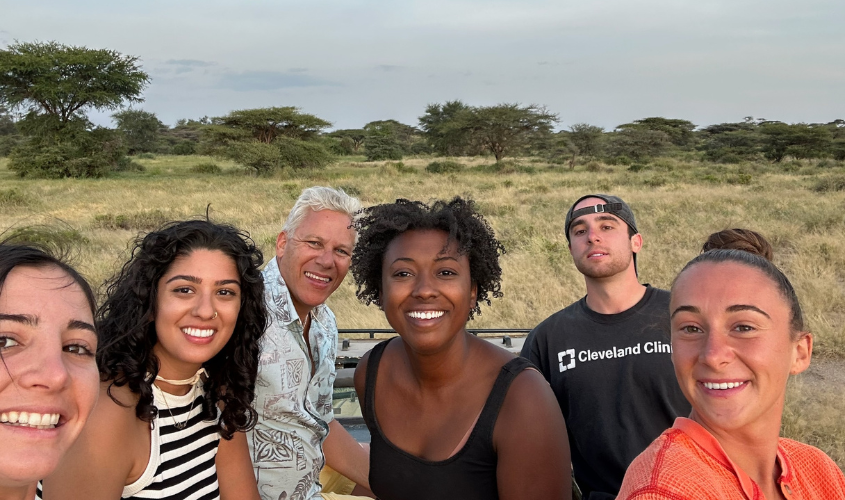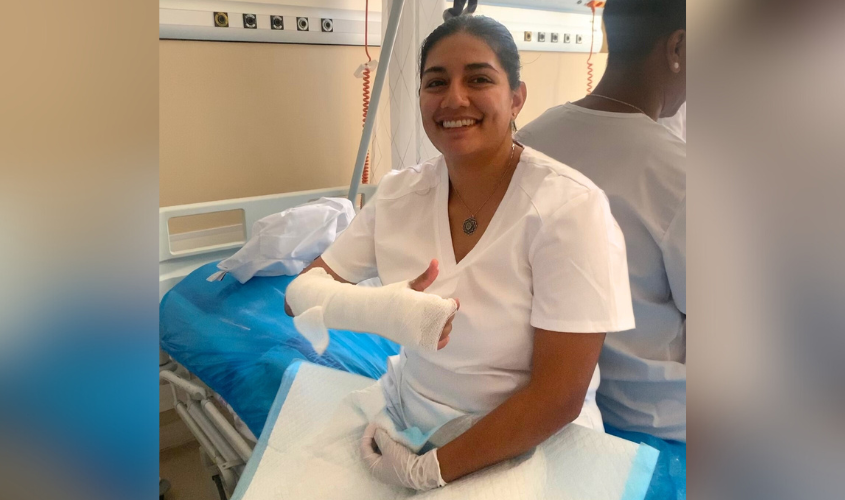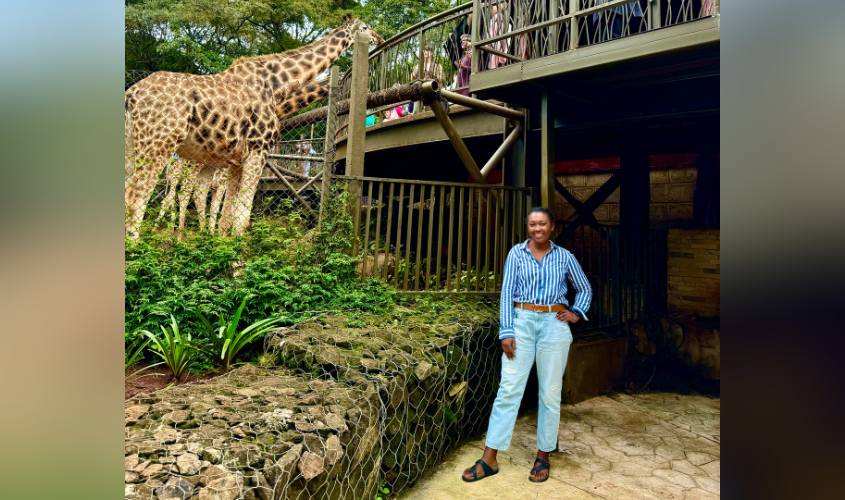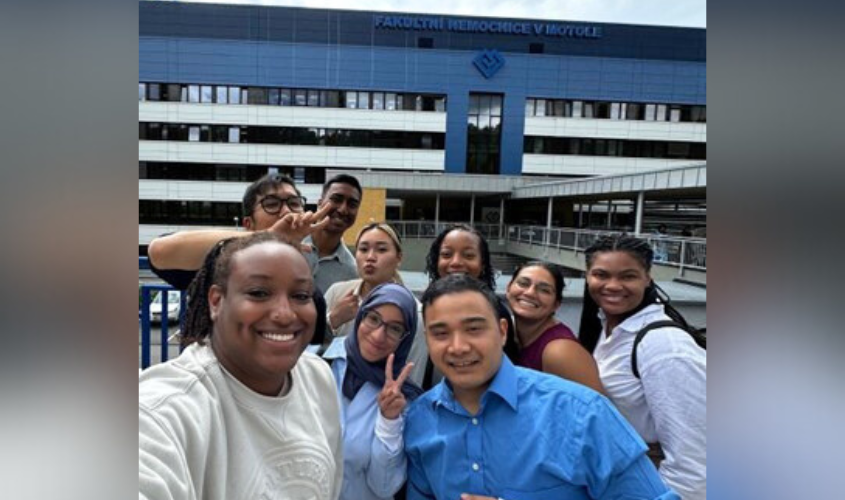SOM Faculty Feature: Dr. Ewarld Marshall, Chair of the Department of Pathology
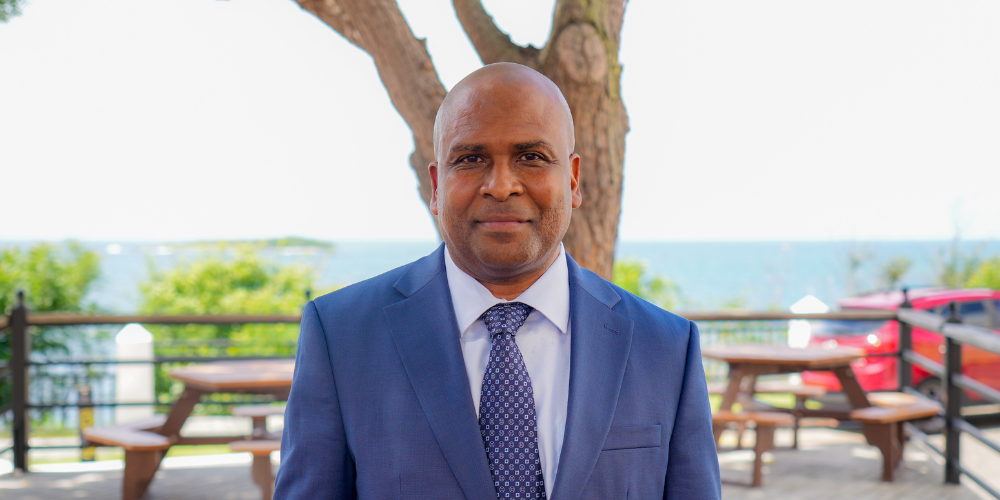
Dr. Ewarld Marshall wears many hats in the St. George’s University School of Medicine. But one of the positions he takes most seriously is that of role model to his students as they pursue their passion to earn an MD.
Dr. Marshall serves as the chair of the Department of Pathology, director of the diagnostic lab, and was recently made associate director of University Health Services. He began his tenure at SGU in 2006 as a clinical instructor, working his way up to lecturer, then associate professor, and now department chair. In that time, he also earned master’s degrees in anatomical science and in medical education.
Dr. Marshall, originally from Grenada, began his career in banking before transitioning to medicine. He trained in Havana, Cuba to become a family practitioner and completed his post-graduate studies in emergency and resuscitation medicine. During his time in Cuba, he also became fluent in Spanish, a skill he still utilizes regularly.
SGU News sat down with Dr. Marshall to learn more about him and his approach to teaching at SGU.
SGU: What are you most proud of in your career?
Dr. Marshall: As a practicing physician, I can touch many lives by seeing patients, but I think I make a bigger impact when I teach medical students. I take that seriously because it’s a representation of you as an educator, the pearls of wisdom that you pass on to your students, and how you portray that professionalism to them. That’s one of the things that I can say I am proudest about my career, and I’m thankful for that opportunity.
SGU: What do you love most about teaching, and what are the key takeaways you want your students to learn?
Dr. Marshall: It’s really a joy to see when those light bulbs go off when student make the connections when learning. That’s what I would like my students to do. I want my students to be able to reason, to be able to think, and to become problem solvers.
I want them to be comprehensive, empathetic physicians, so I try to give students behavior to emulate. I also want them to recognize that medicine is a privilege that someone is given to serve humanity. It’s about more about service than about oneself.
SGU: What fascinates you about pathology?
Dr. Marshall: It’s a beautiful specialty because it actually helps you to become a better clinician. It’s very broad, and we call it the “mother of internal medicine.” It’s a very foundational science that is necessary to become a good physician. Diagnosis, treatment, patient care—they go hand in hand.
Pathology, as a field, is very scientifically based. You must use a lot of intuition because you are examining body tissues, blood, and in the case of forensic pathology, evidence left by the living on the dead. You are consistently integrating medical knowledge and science.
SGU: What advice do you have for medical students just starting at SGU?
Dr. Marshall: Medicine is a journey and not a destination. It’s about persistence, it’s about passion, and it’s about perseverance. You must always remember why you wanted to become a physician.
As you go through medical school, you will encounter many people, people who you might think are smarter or more successful than you. Being better than them should not be your goal. You should learn to be the best physician that you can be, and that should be your personal goal. You got into medicine to improve the quality of life for humanity.
SGU: Why should prospective medical students consider SGU?
Dr. Marshall: SGU has one of the most diverse populations of students. I think a student who attends SGU gets a lesson in global diversity in that you meet and interact with so many different cultures. You learn so many nuances that it broadens your horizons in terms of how you are going to approach your patients.
Prospective medical students should also consider SGU’s curriculum. Our curriculum is designed in such a way that it accommodates many learning types.
SGU: Being on campus, where is your favorite place to eat?
Dr. Marshall: I’m going to be a bit biased but the Cuban Corner. My favorite thing to eat is a Cuban staple, which is black beans, rice, and pork steak. The food reminds me of my journey and is a bit nostalgic. It reminds me of where I was, where I am now, and how far I’ve come.
— Juliette Kimmins
